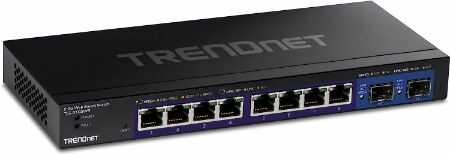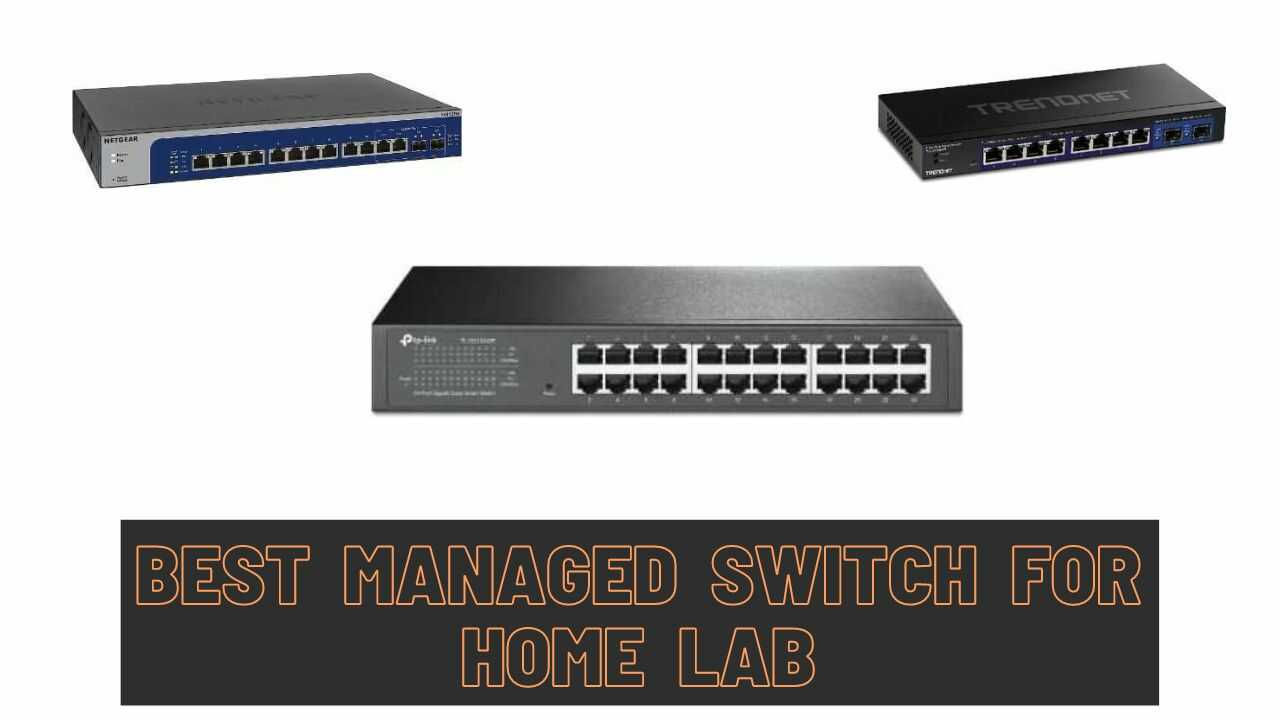Are you looking for the Best Managed Switch for your home lab? Look no further! With so many features, advanced networking capabilities, and cost-effective prices, a managed switch is an excellent investment that will help your home lab become much more efficient. In this blog post, we’ll discuss what makes a well-managed switch and explore the features of some of the top models on the market.
Whether you’re just starting in building up a home lab or making improvements to what you already have set up, this blog post will give you all the information that you need when shopping around for your ideal switch.
Look Here:
Home labs are becoming increasingly popular for those who want to experiment with new technologies without investing in expensive hardware. Home labs can be used for testing applications, practicing network configuration, or running virtual machines and other software environments. Depending on the type of home lab being set up, different types of network infrastructure may be needed to ensure that the lab is secure and reliable.
- For example, if a virtualized server environment is being set up, the home lab will need to include a managed switch to ensure that the network is properly configured.
Check Out Our Top 3 Recommendations
1. TP-Link 24 Port Gigabit Switch | Easy Smart Managed
2. NETGEAR 28-Port 10G Ethernet Smart Switch (XS728T) – Managed
3. TRENDnet 10-Port Multi-Gig Web Smart Switch
6 Best Managed Switch for Home Lab
Here are our top 6 picks for the best-managed switch for the home lab:
1. TP-Link 24 Port Gigabit Switch | Easy Smart Managed

Core Specification
Managed Switch Features
| Switch Data Transfer Rate | 1000 Mb per second |
| Switch Setup | Simple network set-up |
| Switch Connectivity | plug-and-play connectivity |
| Switch Management | Abundant VLAN features |
| Switch Support | IGMP Snooping optimizes multicast applications |
| Switch Special feature | Port and tag-based QoS |
| Switch Performance | Port Mirroring, Loop Prevention, and Cable Diagnostics |
| Switch QoS | Port and tag based QoS |
| Switch Hardware type | Sturdy Metal |
| Switch Port type | Shielded Ports |
| Switch Others | Supports desktop or rackmount placement |
| Switch Warranty | Yes |
| Price | |
Pros & Cons
| Pros | Cons |
| Full duplex 1000mbps speeds on every port, managed, very easy to set up | The power supply is small and wont block up your plugs |
| The power supply is small and won’t block up your plugs | |
| All the ports can have separate VLAN tags with 802.1Q configuration | |
| This is a managed switch with a fairly low price tag | |
| Speeds transfer at whichever upload/download speeds you have for your internet provider |
2. NETGEAR 28-Port 10G Ethernet Smart Switch (XS728T) – Managed

Core Specification
Managed Switch Features
| Switch Data Transfer Rate | 1000 Mb per second |
| Switch Setup | Port and tag-based QoS |
| Switch Connectivity | Plug-and-play connectivity |
| Switch Management | Advanced VLAN & QoS IGMP Advanced Security Link Aggregation |
| Switch Support | SNMP (NMS 300) management |
| Switch Special feature | Energy efficient design compliant with IEEE802.3az |
| Switch Performance | High |
| Switch QoS | Energy-efficient design compliant with IEEE802.3az |
| Switch Hardware type | Sturdy Metal |
| Switch Port type | 24 x 10G Ethernet , 4 x 1G/10G SFP ports |
| Switch Others | Supports desktop or rackmount placement |
| Switch Warranty | Yes |
| Price | |
Pros & Cons
| Pros | Cons |
| The web interface is a bit outdated | Plug and play: those who don’t understand switches |
| Web-based configuration and monitoring interface on MacOS High Sierra / Safari | |
| Fanless design so it can sit in an office environment and not disturb people | |
| Supports RADIUS authentication |
3. TP-Link TL-SG1016PE V3 16 Port Gigabit PoE Switch

Core Specification
Managed Switch Features
Pros & Cons
| Pros | Cons |
| Quick deployment | Management features are very basic. |
| Easy and cost effective PoE | |
| The device seemed to be fine, the gigabit ports worked fine for non-POE connections | |
| Useful for IP camera traffic, or to segment networks in a small office | |
| Loopback prevention |
4. NETGEAR 12-Port 10G Multi-Gigabit Plus Switch (XS512EM) – Managed

Core Specification
Managed Switch Features
Pros & Cons
| Pros | Cons |
| It will fit in a 1U slot, but it is slightly smaller | Management features are very basic. |
| Works as advertised. Plus comes with a lifetime warranty | |
| If you just want Multi-gig with basic VLAN management, this is a great in between | |
| This is the best way 2.5gig or faster switch on the market and the online support is great | |
| It works as advertised and is exactly what I needed for my home network at a decent price |
5. TRENDnet 10-Port Multi-Gig Web Smart Switch

Core Specification
Managed Switch Features
Pros & Cons
| Pros | Cons |
| All the cords are in the front, including power. This is a nice space saver | I also noticed it runs really warm |
| It’s cost-effective, and the least expensive in it’s class | |
| Simple and easy to use a non-managed switch | |
| It’s cost-effective, and the least expensive in its class |
6. TP-Link 16 Port Gigabit Ethernet Network Switch

Core Specification
Managed Switch Features
Pros & Cons
| Pros | Cons |
| Good throughput. good value. in service for over a year without incident | When it gets hot it stops working |
| The switch is built with high-quality materials and has a metal casing | |
| Works great. Used in home network | |
| This device works flawlessly for me | |
| I’m no expert, but this has worked well with no glitches whatsoever since put in place |
Factors to Consider When Choosing a Managed Network Switch for Home Labs
When it comes to choosing a managed network switch for a home lab, several factors need to be considered. These include the number of ports needed, the management capabilities offered by the switch, power supply requirements, and performance and security features. Cost and ease of installation/setup should also be taken into consideration.
Number of Ports
The number of ports needed in a managed network switch can vary depending on the size of the home lab. Generally, it is recommended to choose a switch with more ports than are necessary to allow for future expansion. Additionally, some switches may support additional features such as link aggregation, which allows multiple ports to be combined into one higher-bandwidth connection.
Management Capabilities
When selecting a managed network switch for a home lab, it is important to consider the management capabilities offered by the switch. Many managed switches provide access control lists (ACLs) that can be used to restrict different types of traffic, as well as VLANs that can be used to segregate different parts of the network. Additionally, some switches may provide other features such as monitoring or logging capabilities.
Power Supply Requirements
The power supply requirements of a managed network switch should also be taken into consideration when choosing one for a home lab. Switches typically require either a single power supply or dual power supplies, with the latter being more reliable. Additionally, some switches may require an external UPS (uninterruptible power supply) to ensure uninterrupted operation.
Performance and Security Features
When selecting a managed network switch for a home lab, it is important to consider the performance and security features offered. Performance features can include link aggregation, port trunking, and Quality of Service (QoS), while security features can include access control lists (ACLs), Virtual Local Area Networks (VLANs), Spanning Tree Protocol (STP), or other advanced technologies.
Cost and Ease of Installation/Setup
Finally, it is important to consider the cost and ease of installation/setup when selecting a managed network switch for a home lab. Lower-cost switches may lack some advanced features such as link aggregation or port trunking, but can still provide basic functionality.
Additionally, some switches may require additional hardware such as an external UPS to ensure reliable operation. Additionally, the switch should have clear instructions and an intuitive user interface to make setup as easy as possible.
Look Here:
Frequently Asked Questions
Is it hard to set up a home lab?
No, setting up a home lab is not difficult. Depending on the type of environment being set up, there may be different hardware and software requirements that need to be met, but overall the process can be relatively straightforward.
Why is a managed switch important for a home lab?
A managed switch is important for a home lab because it allows the network to be properly configured and monitored. Managed switches provide access control lists (ACLs) that can be used to restrict different types of traffic, as well as VLANs that can be used to segregate different parts of the network. Additionally, some switches may provide other features such as monitoring or logging capabilities.
Can a managed switch be used for both home and business applications?
Yes, a managed switch can be used for both home and business applications. Depending on the needs of the environment, different features and capabilities may need to be included to accommodate the requirements of each application.
Should I buy a switch with more ports than necessary?
Yes, it is generally recommended to buy a switch with more ports than are necessary to allow for future expansion. Additionally, some switches may support additional features such as link aggregation, which allows multiple ports to be combined into one higher-bandwidth connection.
Do all managed switches come with the same features?
No, not all managed switches come with the same features. Depending on the model and manufacturer, different switches may have different capabilities and may offer varying levels of performance or security. It is important to research different models to determine which switch best suits your needs.
Final Thoughts
Managed switches are an important part of any home lab setup, as they provide the necessary performance and security features to keep your network secure and running smoothly. When selecting a managed switch for a home lab, it is important to consider factors such as power supply requirements, performance and security features, cost, and ease of installation/setup.
Different models may offer varying levels of features and capabilities, so it is important to research different models before making a purchase. Finally, it is generally recommended to buy a switch with more ports than necessary to allow for future expansion. With the right managed switch in place, you can enjoy reliable and secure network performance in your home lab.

